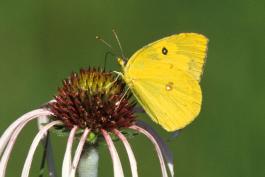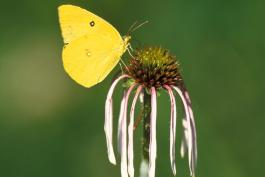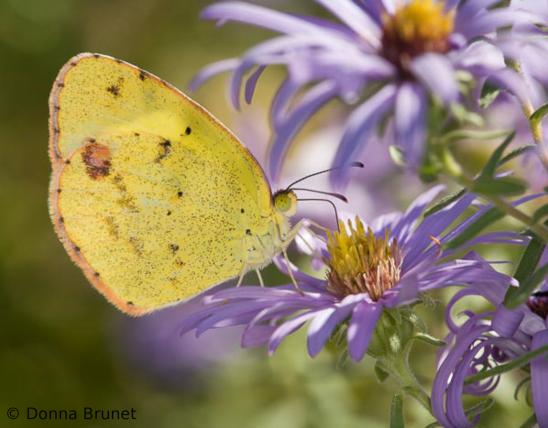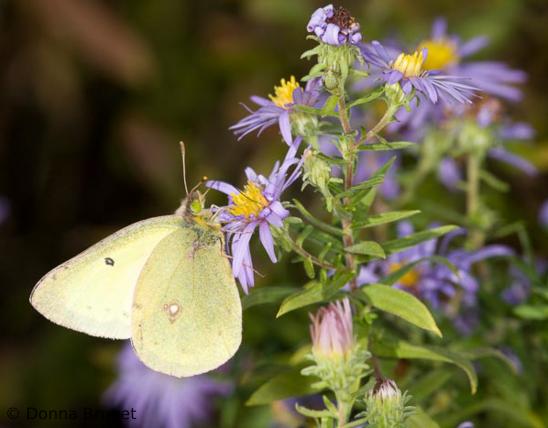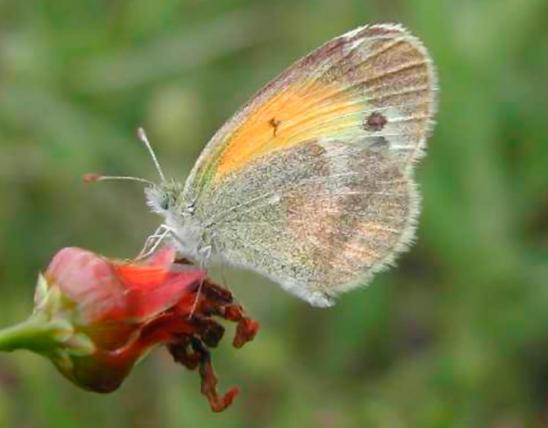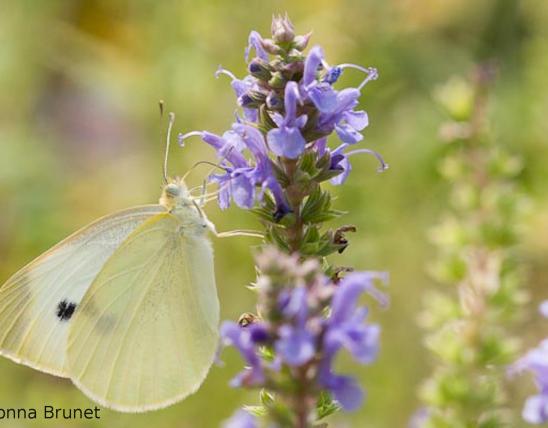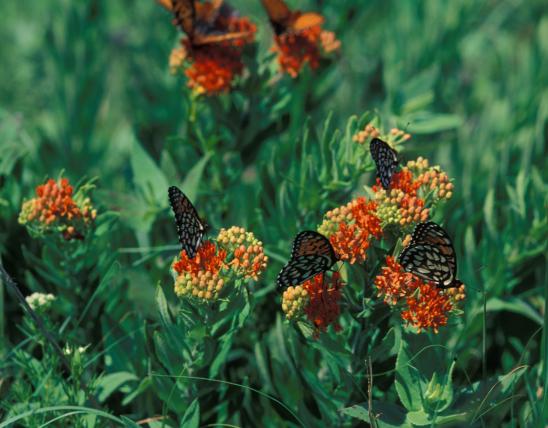
The southern dogface is one of several members of the sulphurs and whites family that occurs in Missouri. It is easily distinguished by the dog-face pattern on its yellow forewings. The pattern is so bold, you can see it as the insect flutters around, and even though these butterflies always rest with wings closed, you can usually see the distinctive pattern through from the other side. If you look carefully at this butterfly’s wing shape, you will also see that the forewing tip is slightly falcate (pointed and curved outward).
Two color forms occur. In most of the summer, the undersides are a bright, clear yellow. In late summer and fall, the undersides are colored with a pink mottling along the margins and some of the veins.
Larvae are hairless and green, with wrinkles encircling the segments, and marked at regular intervals with yellowish, or yellow and black crossbands; a yellow, orange and/or black lengthwise stripe runs along each side above the legs.
Similar species:
- The Mexican yellow (Eurema mexicana) sometimes comes into Missouri from the southwest. It has a somewhat similar “dogface” pattern, but it also has a pointy “tail” on the hindwing. Also, many individuals of that species are more cream-colored, and less bright yellow than the southern dogface.
- Other Missouri sulphurs may have some black marks on the forewing edges, but never in the shape of a dog’s head.
Wingspan: 1¾–2½ inches.
Statewide.
Habitat and Conservation
Southern dogfaces occur in a variety of open, fairly dry areas, ranging from prairies and pastures, to roadsides, pastures, and overgrown fields, to open woodlands.
A southern species — whose yearlong territory ranges from South America north to southern Texas and Florida — the southern dogface repopulates much of our continent each year, sometimes reaching into Canada. In the Ozarks, it usually is present long enough to have at least two broods before all individuals (including eggs, caterpillars, and pupae) are killed by freezing temperatures in late autumn.
Food
Caterpillars eat wildflowers in the legume family, including purple prairie clover, lead plant, false indigo, indigo bush, alfalfa, soy bean, and various clovers. Adults visit flowers for nectar and also take moisture and minerals from puddles and other wet ground.
Status
Summer breeding resident only, with two broods in the Ozarks, and probably only one in northern Missouri.
Life Cycle
The southern dogface does not survive Missouri winters, so the species repopulates our state each year as southern populations expand their range northward starting each spring. Like all butterflies, they start a eggs, hatch into caterpillars and grow, then pupate and emerge as a mature, winged adult. Males perch and wait for females to come near. Females deposit eggs singly, on the undersides of leaves, on suitable host plants.
Human Connections
Kids love seeing the little dog picture on this insect’s forewings. Grownups can appreciate the human capacity to make out pictures in the random patterns of things like clouds . . . and butterfly markings.
Ecosystem Connections
Several types of butterflies and moths are zapped by cold weather each year and repopulate our state each growing season. Other examples include the sachem (a common skipper), and the ailanthus webworm moth. Why do they do this? Apparently it has to do with the tendency of animals to disperse outward from where they were born, and the need to secure fresh, unoccupied territories and find plentiful food and egg-laying resources.



